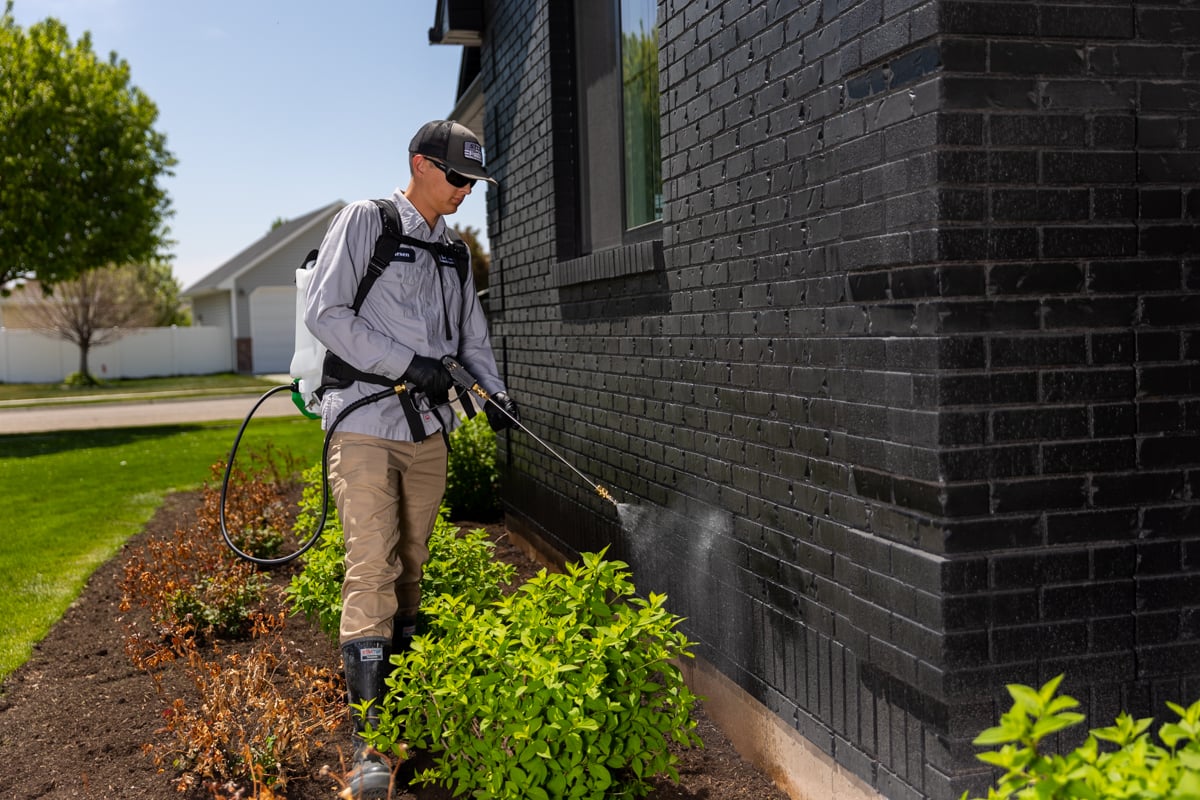Quality A1 Pest Control Services Charlotte - Secure Your Home
Quality A1 Pest Control Services Charlotte - Secure Your Home
Blog Article
Bed Insect Treatment Malfunction: Comparing Chemical Vs. Non-Chemical Solutions
In the world of bug control, specifically when handling the relentless issue of bed insects, the choice between chemical and non-chemical therapy services can be a critical one. Both methods supply distinct advantages and disadvantages, affecting factors such as effectiveness, security factors to consider, and general cost. By examining the nuanced information of each method, a more clear understanding of which course to go after in attending to a bed bug problem can be acquired.
Effectiveness of Chemical Treatments
Chemical therapies for bed pest infestations have been widely recognized for their quick and potent efficiency in getting rid of these bugs. When thinking about the performance of chemical treatments, it is crucial to recognize that they can provide a fast and extensive option to a bed bug trouble. Specialist pest control experts typically depend on insecticides to target bed insects at different phases of their life process, consisting of eggs, grownups, and nymphs. These chemicals typically work by interrupting the bed bugs' nervous system, resulting in paralysis and ultimate death.
Additionally, chemical treatments have the benefit of offering residual impacts, meaning that they can proceed to eliminate bed pests even after the first application. This residual action is especially helpful in combating any type of potential re-infestations. Additionally, the quick activity of chemical therapies can bring relief to people encountering serious bed insect infestations, enabling them to gain back control of their space swiftly.
Safety Problems With Chemical Solutions
When utilizing chemical services for bed insect treatment is ensuring the security of residents and the environment,One important facet that calls for careful consideration. While chemical treatments can be efficient in getting rid of bed pests, they might position threats otherwise managed appropriately. Among the key safety worry about chemical solutions is the potential harm they can create to human wellness. Direct exposure to particular chemicals used in bed bug therapies can lead to respiratory concerns, skin inflammation, or various other unfavorable responses, especially in individuals with pre-existing problems or level of sensitivities. Additionally, incorrect application or dose of chemical pesticides can result in hazardous residues sticking around in the treated area, presenting lasting health and wellness dangers to occupants.
Furthermore, the ecological influence of chemical remedies is another significant consideration. Some chemicals utilized in bed bug treatments might be damaging to useful bugs, wildlife, and environments if they leach into the soil or water systems. It is important to make use of chemical treatments judiciously, following safety standards, and thinking about much less harmful options to reduce these risks and ensure the secure and reliable monitoring of bed insect problems.
Advantages of Non-Chemical Techniques
Taking into consideration the potential security concerns and environmental influence connected with chemical services for bed insect treatment, checking out non-chemical methods presents a promising option with numerous distinct benefits. Non-chemical treatments are eco pleasant, as they do not contribute to air or water contamination, making them a sustainable option for pest control.
Furthermore, non-chemical services can be efficient in targeting bed bugs, Get More Information including hard-to-reach areas where chemical treatments may not pass through - A1 pest control charlotte nc bed bugs. Approaches such as warm therapy, vacuuming, heavy steam cleansing, and bed mattress coverings provide complete obliteration without the usage of unsafe chemicals.
Limitations of Non-Chemical Treatments

Furthermore, non-chemical treatments often need numerous applications to accomplish effective eradication. This can be taxing and may not constantly guarantee total removal of all bed pests and their eggs, specifically in hard-to-reach or concealed places.
In addition, the success of non-chemical therapies greatly depends on appropriate application and thoroughness, which can be challenging for individuals without expert expertise. Poor application of non-chemical techniques might lead to insufficient elimination, bring about relentless infestations and the requirement for added therapies.
For that reason, while non-chemical therapies have their benefits, it is vital to recognize these limitations and consider them when identifying the most effective method for taking care of bed bug infestations.
Cost Comparison: Chemical Vs. Non-Chemical Options
Provided the limitations linked with non-chemical therapies, a necessary facet to review in the context of bed pest administration is the cost comparison between chemical and non-chemical options. In comparison, non-chemical treatments like warm treatment or heavy steam can be extra costly, with prices varying from $1,000 to $6,000 for an entire home. While the first expense of chemical therapies might appear lower, numerous therapies might be required to fully remove the problem, potentially raising the total cost.
Final Thought

Taking into consideration the potential safety and security worries and environmental effect connected with chemical options for bed pest treatment, exploring non-chemical techniques presents a promising alternative with numerous distinct benefits.Offered the constraints linked with non-chemical treatments, a crucial element to evaluate in the context of domestic pest control bed insect management is the price contrast between chemical and non-chemical choices. In comparison, non-chemical therapies like warmth therapy or vapor can be extra costly, with expenses ranging from $1,000 to $6,000 for an entire home. While the initial price of chemical therapies might appear lower, multiple treatments might be required to totally remove the infestation, potentially boosting the general price.In conclusion, when contrasting chemical and non-chemical bed insect therapy options, it is crucial to think about efficiency, safety and security, benefits, constraints, and price.
Report this page